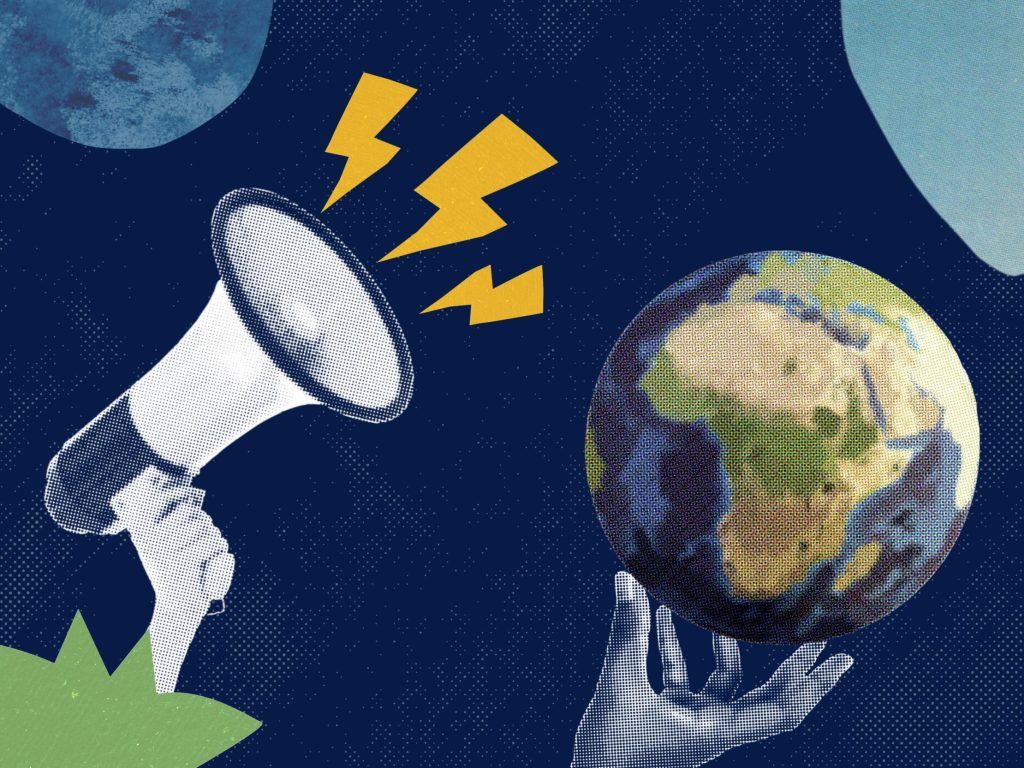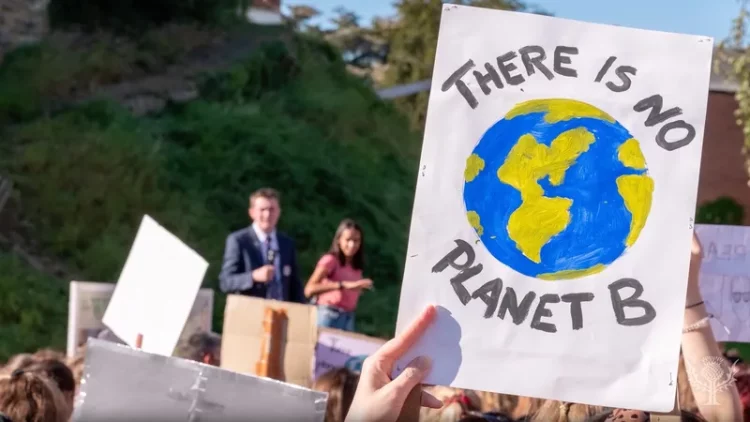Introduction: Climate as the New Economic Driver
The climate crisis is no longer a distant environmental challenge; it has become one of the defining economic forces of the 21st century. As rising global temperatures threaten ecosystems, public health, and infrastructure, governments and businesses worldwide are realizing that climate policies are not simply about protecting the planet—they are about safeguarding future prosperity and competitiveness.
In the last two decades, the idea of a “green transition” has transformed from a niche concept into a central pillar of global economic planning. The transition away from fossil fuels toward renewable energy, sustainable industries, and low-carbon lifestyles is reshaping trade, labor markets, finance, and geopolitics. Climate policies—once regarded as regulatory burdens—are increasingly seen as engines of innovation and investment.
This article explores how climate policies are reshaping global economies through structural transformations in energy, employment, finance, and international relations. It highlights both the opportunities and challenges created by this transition, offering insights into how nations, industries, and individuals can adapt and thrive.
1. The Global Context of Climate Policy
1.1 The Rise of Climate Agreements
International efforts to tackle climate change have evolved over decades, starting with the 1992 United Nations Framework Convention on Climate Change (UNFCCC), which laid the foundation for collective action. The 1997 Kyoto Protocol introduced binding targets for developed countries, while the 2015 Paris Agreement represented a historic moment by uniting nearly every nation under the common goal of limiting global warming to “well below 2°C” above pre-industrial levels.
The Paris Agreement shifted the paradigm by allowing each country to submit its own Nationally Determined Contributions (NDCs), encouraging flexibility while maintaining collective ambition. This structure has encouraged a wave of domestic climate legislation and carbon-neutral pledges by both nations and corporations.
1.2 Policy Instruments: From Regulations to Market-Based Solutions
Climate policies now extend beyond traditional environmental regulation. They include a range of tools designed to create economic incentives for emission reductions:
- Carbon pricing through taxes and cap-and-trade systems.
- Renewable energy subsidies to drive investment in wind, solar, and bioenergy.
- Efficiency standards for vehicles, appliances, and buildings.
- Green public procurement to shift demand toward sustainable goods.
These instruments collectively aim to realign market forces with climate goals, sending clear price signals that guide businesses toward low-carbon pathways.
2. Transforming the Energy Landscape
2.1 From Fossil Fuels to Renewables
The most visible shift driven by climate policies is the ongoing energy transition. Fossil fuels—coal, oil, and natural gas—have powered industrialization for centuries but are the primary source of greenhouse gas emissions. Today, renewable energy is no longer a fringe option; it is at the core of energy strategies in many countries.
- Cost Competitiveness: Technological innovation and economies of scale have dramatically reduced the costs of solar and wind power. In many regions, renewables are now cheaper than new coal or gas plants.
- Energy Independence: Countries that once relied heavily on imported fossil fuels see renewables as a path to greater energy security and stability.
- Decentralization: Distributed energy systems—such as rooftop solar and microgrids—empower communities and reduce vulnerability to centralized supply disruptions.
2.2 The Decline of Fossil Fuel Assets
As renewable energy scales up, fossil fuel industries face increasing financial risk. Known as “stranded assets,” coal mines, oil reserves, and gas infrastructure risk becoming uneconomic before the end of their expected lifespans. This trend challenges fossil fuel–dependent economies, such as those in the Middle East and parts of Africa, and raises geopolitical questions about resource-dependent development models.
3. Labor Market and Workforce Transformation
3.1 The Emergence of Green Jobs
The transition to a low-carbon economy is generating a wave of new employment opportunities. Sectors such as renewable energy, electric vehicles, sustainable agriculture, building retrofitting, and energy efficiency are experiencing rapid growth.
For example:
- The International Renewable Energy Agency (IRENA) estimated that by 2030, renewable energy alone could employ over 40 million people worldwide.
- Solar panel installation, battery manufacturing, and wind turbine maintenance are among the fastest-growing occupations in several advanced economies.
3.2 The Challenge of a “Just Transition”
While the green economy creates new jobs, it also disrupts traditional industries. Coal miners, oil rig workers, and communities dependent on fossil fuel revenues face job losses and economic dislocation. To maintain social cohesion and fairness, policymakers are emphasizing the concept of a “just transition”—ensuring that the benefits of green growth are shared and that vulnerable workers receive support through retraining, reskilling, and targeted investments.
4. Finance and Investment in the Green Transition
4.1 The Rise of ESG Investing
Financial markets are increasingly recognizing that climate risk is also investment risk. The growth of ESG (Environmental, Social, and Governance) investing reflects a profound shift in capital allocation. Investors, pension funds, and insurance companies are factoring in climate resilience, carbon exposure, and sustainability metrics when evaluating assets.
- Global ESG assets surpassed $40 trillion in 2022 and continue to rise.
- Companies with robust climate strategies often outperform their peers over the long term, reflecting reduced regulatory risk and stronger stakeholder trust.
4.2 Green Bonds and Innovative Financing Mechanisms
Governments and corporations are issuing green bonds to finance projects ranging from renewable power plants to energy-efficient infrastructure. According to the Climate Bonds Initiative, cumulative green bond issuance has already surpassed $2 trillion.
Innovative financing tools—such as blended finance and climate adaptation funds—are helping to mobilize private capital for sustainable projects, particularly in developing countries that face higher investment risks.
4.3 Central Banks and Climate Risk
Central banks are now factoring climate-related risks into monetary policy and financial stability frameworks. The Network for Greening the Financial System (NGFS), a coalition of over 100 central banks and financial regulators, advocates integrating climate scenarios into stress testing and disclosure standards.

5. Geopolitical and Trade Implications
5.1 A New Map of Strategic Resources
The transition to clean energy shifts global power dynamics. While fossil fuels dominated 20th-century geopolitics, the 21st century’s energy competition centers on critical minerals like lithium, cobalt, and rare earth elements—essential for batteries, solar panels, and wind turbines.
Countries with abundant reserves of these resources—such as Australia, Chile, and the Democratic Republic of Congo—are becoming pivotal players in global supply chains. This shift underscores the need for international cooperation to ensure responsible sourcing and avoid new forms of resource dependency.
5.2 Carbon Border Adjustment Mechanisms
The European Union and other regions are introducing carbon border adjustment mechanisms (CBAMs), which impose tariffs on imports from countries with weaker climate policies. These measures aim to prevent “carbon leakage” and encourage global convergence on carbon pricing but may also spark trade tensions if not carefully implemented.
5.3 Global South vs. Global North Dynamics
Climate policies highlight longstanding inequities between developed and developing nations. Wealthier countries, historically responsible for the bulk of emissions, are expected to provide climate finance and technology transfer to support sustainable development in poorer regions. Balancing these responsibilities remains a contentious aspect of international climate diplomacy.
6. Technological Innovation as an Economic Catalyst
6.1 Clean Energy Technologies
The green transition drives unprecedented investment in innovation—ranging from advanced photovoltaics and offshore wind farms to long-duration energy storage and green hydrogen production. These technologies not only reduce emissions but also create new industries, export opportunities, and competitive advantages.
6.2 Digital Transformation and Climate Solutions
The convergence of digitalization and climate policy is unlocking further efficiencies:
- Smart grids balance supply and demand in real time, reducing energy waste.
- AI and data analytics optimize resource use in agriculture, manufacturing, and logistics.
- The Internet of Things (IoT) enables precision monitoring of emissions, water use, and land management.
7. Challenges and Risks Ahead
Despite impressive progress, the green transition faces several challenges:
- Policy Uncertainty: Sudden changes in government priorities or regulations can deter investment.
- Technological Gaps: Some sectors—like aviation, cement, and steel—still lack cost-effective low-carbon solutions.
- Social Resistance: Populations affected by rising energy prices or job losses in traditional industries may push back against climate policies.
- Global Coordination: Without stronger international alignment, progress in one region may be offset by inaction elsewhere.
8. Looking Forward: Pathways to a Sustainable Economy
To ensure that climate policies reshape global economies in an inclusive and resilient manner, several priorities stand out:
- Accelerating Innovation: Continued research and development funding for breakthrough technologies is crucial.
- Strengthening Carbon Pricing: Transparent and predictable carbon markets drive effective decarbonization.
- Supporting Workers and Communities: Targeted retraining and social policies are vital for a fair transition.
- Mobilizing Private Finance: Public-private partnerships can leverage the trillions needed for global net-zero goals.
- Enhancing Global Cooperation: Equitable climate finance and technology sharing bridge divides between the Global North and South.
Conclusion: Climate Policy as a Catalyst for a New Economic Era
The green transition is more than an environmental imperative—it is a profound economic transformation that redefines how societies produce energy, create jobs, allocate capital, and interact geopolitically. Far from stifling growth, ambitious climate policies are proving to be powerful engines of innovation, competitiveness, and long-term resilience.
As nations race to build low-carbon economies, those that adapt early and invest wisely will reap the benefits of a more sustainable, inclusive, and prosperous global order. The coming decades will be defined not by whether humanity acts on climate change, but by how effectively and equitably it does so.
















































